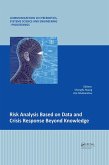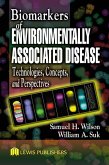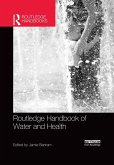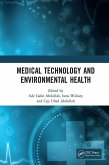Frederick C. Kopfler
Environmental Epidemiology (eBook, PDF)
173,95 €
173,95 €
inkl. MwSt.
Sofort per Download lieferbar

87 °P sammeln
173,95 €
Als Download kaufen

173,95 €
inkl. MwSt.
Sofort per Download lieferbar

87 °P sammeln
Jetzt verschenken
Alle Infos zum eBook verschenken
173,95 €
inkl. MwSt.
Sofort per Download lieferbar
Alle Infos zum eBook verschenken

87 °P sammeln
Frederick C. Kopfler
Environmental Epidemiology (eBook, PDF)
- Format: PDF
- Merkliste
- Auf die Merkliste
- Bewerten Bewerten
- Teilen
- Produkt teilen
- Produkterinnerung
- Produkterinnerung

Bitte loggen Sie sich zunächst in Ihr Kundenkonto ein oder registrieren Sie sich bei
bücher.de, um das eBook-Abo tolino select nutzen zu können.
Hier können Sie sich einloggen
Hier können Sie sich einloggen
Sie sind bereits eingeloggt. Klicken Sie auf 2. tolino select Abo, um fortzufahren.

Bitte loggen Sie sich zunächst in Ihr Kundenkonto ein oder registrieren Sie sich bei bücher.de, um das eBook-Abo tolino select nutzen zu können.
This informative book is valuable to a broad spectrum of individuals active in the environmental and health sciences, including chemists, epidemiologists, and mathematics modelers, as well as those involved with measurement and effects of numerous kinds of drinking water contamination and both indoor and ambient air pollution. Environmental researchers involved with human exposure to toxic substances, regulators and administrators will also find this work of value.
- Geräte: PC
- mit Kopierschutz
- eBook Hilfe
Andere Kunden interessierten sich auch für
![Risk Analysis Based on Data and Crisis Response Beyond Knowledge (eBook, PDF) Risk Analysis Based on Data and Crisis Response Beyond Knowledge (eBook, PDF)]() Risk Analysis Based on Data and Crisis Response Beyond Knowledge (eBook, PDF)49,95 €
Risk Analysis Based on Data and Crisis Response Beyond Knowledge (eBook, PDF)49,95 €![Strategic Environmental Performance (eBook, PDF) Strategic Environmental Performance (eBook, PDF)]() Frances AlstonStrategic Environmental Performance (eBook, PDF)46,95 €
Frances AlstonStrategic Environmental Performance (eBook, PDF)46,95 €![Biomarkers of Environmentally Associated Disease (eBook, PDF) Biomarkers of Environmentally Associated Disease (eBook, PDF)]() Biomarkers of Environmentally Associated Disease (eBook, PDF)257,95 €
Biomarkers of Environmentally Associated Disease (eBook, PDF)257,95 €![Information Technology in Medical Diagnostics III (eBook, PDF) Information Technology in Medical Diagnostics III (eBook, PDF)]() Information Technology in Medical Diagnostics III (eBook, PDF)51,95 €
Information Technology in Medical Diagnostics III (eBook, PDF)51,95 €![Routledge Handbook of Water and Health (eBook, PDF) Routledge Handbook of Water and Health (eBook, PDF)]() Routledge Handbook of Water and Health (eBook, PDF)62,95 €
Routledge Handbook of Water and Health (eBook, PDF)62,95 €![Persistent, Bioaccumulative, and Toxic (PBT) Chemicals (eBook, PDF) Persistent, Bioaccumulative, and Toxic (PBT) Chemicals (eBook, PDF)]() Adam D. K. AbelkopPersistent, Bioaccumulative, and Toxic (PBT) Chemicals (eBook, PDF)65,95 €
Adam D. K. AbelkopPersistent, Bioaccumulative, and Toxic (PBT) Chemicals (eBook, PDF)65,95 €![Medical Technology and Environmental Health (eBook, PDF) Medical Technology and Environmental Health (eBook, PDF)]() Medical Technology and Environmental Health (eBook, PDF)74,95 €
Medical Technology and Environmental Health (eBook, PDF)74,95 €-
-
-
This informative book is valuable to a broad spectrum of individuals active in the environmental and health sciences, including chemists, epidemiologists, and mathematics modelers, as well as those involved with measurement and effects of numerous kinds of drinking water contamination and both indoor and ambient air pollution. Environmental researchers involved with human exposure to toxic substances, regulators and administrators will also find this work of value.
Dieser Download kann aus rechtlichen Gründen nur mit Rechnungsadresse in A, B, BG, CY, CZ, D, DK, EW, E, FIN, F, GR, HR, H, IRL, I, LT, L, LR, M, NL, PL, P, R, S, SLO, SK ausgeliefert werden.
Produktdetails
- Produktdetails
- Verlag: Taylor & Francis eBooks
- Seitenzahl: 304
- Erscheinungstermin: 11. November 2019
- Englisch
- ISBN-13: 9781000716153
- Artikelnr.: 58253358
- Verlag: Taylor & Francis eBooks
- Seitenzahl: 304
- Erscheinungstermin: 11. November 2019
- Englisch
- ISBN-13: 9781000716153
- Artikelnr.: 58253358
- Herstellerkennzeichnung Die Herstellerinformationen sind derzeit nicht verfügbar.
FREDERICK C. KOPFLER is presently Chief of the Chemical and Statistical Support Branch, Toxicology and Microbiology Division, Health Effects Research Laboratory, U.S. Environmental Protection Agency, Cincinnati, Ohio. He obtained his BS in chemistry from Southeastern Louisiana University in 1960 and advanced degrees in biochemistry and food science from Louisiana State University. After completing a National Research Council-sponsored postdoctoral appointment in the Pioneering Research Laboratory for Animal Proteins at the U.S. Department of Agriculture, he was involved in environmental research with the U.S. Public Health Service and, since its formation in 1970, has been associated with the U.S. Environmental Protection Agency (EPA). Dr. Kopfler has worked closely with epidemiologists in designing studies of the relationship between drinking water chlorination practices and cancer incidence in consumers, and studies of mineral and trace element content of drinking water and the occurrence of cardiovascular disease. His current research areas include isolation of organic contaminants from water for toxicological testing and the identification of the reaction products of chlorine with biological chemicals., GUNTHER F. CRAUN has served in various capacities over the past twenty years as an environmental engineer and epidemiologist with the U.S. Public Health Service and the U.S. Environmental Protection Agency (EPA). Since 1970, he has been associated with EPA's drinking water and health research activities. His current research interests include relationships between drinking water contaminants and cardiovascular disease, cancer, and infectious diseases. He received his education in civil engineering (BS) and sanitary engineering (MS) at Virginia Polytechnic Institute, and public health (MPH) and epidemiology (MS) at Harvard University. He is registered as a professional engineer in the Commonwealth of Virginia., Mr. Craun has authored and coauthored numerous articles in the international scientific, public health, and engineering literature. The American Water Works Association and the New England Water Works Association have recognized Mr. Craun for his work on waterborne disease outbreaks and trace metals in the drinking water of the Boston metropolitan area. The EPA awarded Mr. Craun a meritorious performance citation for his participation in the Community Water Supply Study, which identified deficiencies in the nation's public water supplies., Mr. Craun is a member of the International Association of Milk, Food, and Environmental Sanitarians Committee on Communicable Diseases Affecting Man, and from 1977 to 1982 he served as chairman of the American Water Works Association Committee on the Status of Waterborne Disease Outbreaks in the United States and Canada. Mr. Craun served as liaison representative to the National Research Council's Safe Drinking Water Committee from 1974 to 1977, and as a member of the World Health Organization Working Group on Sodium Chloride, and Conductivity in Drinking Water in 1978. He has also served as a member of the Water Pollution Control Federation Research Committee and the International Association on Water Pollution Research Study Group on Virology., Mr. Craun is currently Coordinator of the Environmental Epidemiology Program in EPA's Health Effects Research Laboratory, Cincinnati, Ohio. In his present capacity, he works with a number of other government agencies, including the National Cancer Institute and Oak Ridge National Laboratory, on epidemiological studies of drinking water contaminants. He is also involved in projects with the National Academy of Sciences and the University of Pittsburgh Center for Environmental Epidemiology to identify new research areas and methodologies for environmental epidemiology.
SECTION I: USE OF BIOLOGICAL MONITORING TO ASSESS EXPOSURE
1. Detection of Aflatoxin B1 Guanine Adducts in Human Urine Samples from Kenya
2. Assessment of Human Exposure to Chemicals Through Biological Monitoring
3. The Monitoring of Exposure to Carcinogens by the GC-MS Determination of Alkylated Amino Acids in Hemoglobin and of Alkylated Nucleic Acid Bases in Urine
4. Determining DNA Adducts by Electrophore
5. Quantification of Tissue Doses of Carcinogenic Aromatic Amines
SECTION II: EPIDEMIOLOGIC CONSIDERATIONS FOR ASSESSING EXPOSURE
6. The Feasibility of Conducting Epidemiologic Studies of Populations Residing Near Hazardous Waste Disposal Sites
7 Feasibility Study to Relate Arsenic in Drinking Water to Skin Cancer in the United States
SECTION III: HEALTH AND EXPOSURE DATA BASES
8. Use and Misuse of Existing Data Bases in Environmental Epidemiology: The Case of Air Pollution
9. Opening and Controlling Access to Medicare Data
10. Drinking Water Quality Data Bases
11. The FDA Total Diet Study Program
12. Overview of EPA Major Air Data Bases
13. National Data Base on Body Burden of Toxic Chemicals
14 Broad Scan Analysis of Human Adipose Tissue from the EPA FY 82 NHATS Repository
SECTION IV: ASSESSMENT OF EXPOSURE TO ENVIRONMENTAL CONTAMINANTS FOR EPIDEMIOLOGIC STUDIES
PART ONE: AIR EXPOSURES
15. Results from the First Three Seasons of the TEAM Study: Personal Exposures
Indoor-Outdoor Relationships
and Breath Levels of Toxic Air Pollutants Measured for 355 Persons in New Jersey
16. Inhalation Exposures in Indoor Air to Trichloroethylene from Shower Water
PART TWO: WATER AND OCCUPATIONAL EXPOSURES
17. Drinking Water Characteristics and Cardiovascular Disease in a Cohort of Wisconsin Farmers
18. Empirical Estimation of Exposure in Retrospective Epidemiologic Studies
19. Evaluation of Lead Exposures in the Environment and Their Contribution to Blood Lead Levels in Children
20. The Use of Industrial Hygiene Data in Occupational Epidemiology
Index
1. Detection of Aflatoxin B1 Guanine Adducts in Human Urine Samples from Kenya
2. Assessment of Human Exposure to Chemicals Through Biological Monitoring
3. The Monitoring of Exposure to Carcinogens by the GC-MS Determination of Alkylated Amino Acids in Hemoglobin and of Alkylated Nucleic Acid Bases in Urine
4. Determining DNA Adducts by Electrophore
5. Quantification of Tissue Doses of Carcinogenic Aromatic Amines
SECTION II: EPIDEMIOLOGIC CONSIDERATIONS FOR ASSESSING EXPOSURE
6. The Feasibility of Conducting Epidemiologic Studies of Populations Residing Near Hazardous Waste Disposal Sites
7 Feasibility Study to Relate Arsenic in Drinking Water to Skin Cancer in the United States
SECTION III: HEALTH AND EXPOSURE DATA BASES
8. Use and Misuse of Existing Data Bases in Environmental Epidemiology: The Case of Air Pollution
9. Opening and Controlling Access to Medicare Data
10. Drinking Water Quality Data Bases
11. The FDA Total Diet Study Program
12. Overview of EPA Major Air Data Bases
13. National Data Base on Body Burden of Toxic Chemicals
14 Broad Scan Analysis of Human Adipose Tissue from the EPA FY 82 NHATS Repository
SECTION IV: ASSESSMENT OF EXPOSURE TO ENVIRONMENTAL CONTAMINANTS FOR EPIDEMIOLOGIC STUDIES
PART ONE: AIR EXPOSURES
15. Results from the First Three Seasons of the TEAM Study: Personal Exposures
Indoor-Outdoor Relationships
and Breath Levels of Toxic Air Pollutants Measured for 355 Persons in New Jersey
16. Inhalation Exposures in Indoor Air to Trichloroethylene from Shower Water
PART TWO: WATER AND OCCUPATIONAL EXPOSURES
17. Drinking Water Characteristics and Cardiovascular Disease in a Cohort of Wisconsin Farmers
18. Empirical Estimation of Exposure in Retrospective Epidemiologic Studies
19. Evaluation of Lead Exposures in the Environment and Their Contribution to Blood Lead Levels in Children
20. The Use of Industrial Hygiene Data in Occupational Epidemiology
Index
SECTION I: USE OF BIOLOGICAL MONITORING TO ASSESS EXPOSURE
1. Detection of Aflatoxin B1 Guanine Adducts in Human Urine Samples from Kenya
2. Assessment of Human Exposure to Chemicals Through Biological Monitoring
3. The Monitoring of Exposure to Carcinogens by the GC-MS Determination of Alkylated Amino Acids in Hemoglobin and of Alkylated Nucleic Acid Bases in Urine
4. Determining DNA Adducts by Electrophore
5. Quantification of Tissue Doses of Carcinogenic Aromatic Amines
SECTION II: EPIDEMIOLOGIC CONSIDERATIONS FOR ASSESSING EXPOSURE
6. The Feasibility of Conducting Epidemiologic Studies of Populations Residing Near Hazardous Waste Disposal Sites
7 Feasibility Study to Relate Arsenic in Drinking Water to Skin Cancer in the United States
SECTION III: HEALTH AND EXPOSURE DATA BASES
8. Use and Misuse of Existing Data Bases in Environmental Epidemiology: The Case of Air Pollution
9. Opening and Controlling Access to Medicare Data
10. Drinking Water Quality Data Bases
11. The FDA Total Diet Study Program
12. Overview of EPA Major Air Data Bases
13. National Data Base on Body Burden of Toxic Chemicals
14 Broad Scan Analysis of Human Adipose Tissue from the EPA FY 82 NHATS Repository
SECTION IV: ASSESSMENT OF EXPOSURE TO ENVIRONMENTAL CONTAMINANTS FOR EPIDEMIOLOGIC STUDIES
PART ONE: AIR EXPOSURES
15. Results from the First Three Seasons of the TEAM Study: Personal Exposures
Indoor-Outdoor Relationships
and Breath Levels of Toxic Air Pollutants Measured for 355 Persons in New Jersey
16. Inhalation Exposures in Indoor Air to Trichloroethylene from Shower Water
PART TWO: WATER AND OCCUPATIONAL EXPOSURES
17. Drinking Water Characteristics and Cardiovascular Disease in a Cohort of Wisconsin Farmers
18. Empirical Estimation of Exposure in Retrospective Epidemiologic Studies
19. Evaluation of Lead Exposures in the Environment and Their Contribution to Blood Lead Levels in Children
20. The Use of Industrial Hygiene Data in Occupational Epidemiology
Index
1. Detection of Aflatoxin B1 Guanine Adducts in Human Urine Samples from Kenya
2. Assessment of Human Exposure to Chemicals Through Biological Monitoring
3. The Monitoring of Exposure to Carcinogens by the GC-MS Determination of Alkylated Amino Acids in Hemoglobin and of Alkylated Nucleic Acid Bases in Urine
4. Determining DNA Adducts by Electrophore
5. Quantification of Tissue Doses of Carcinogenic Aromatic Amines
SECTION II: EPIDEMIOLOGIC CONSIDERATIONS FOR ASSESSING EXPOSURE
6. The Feasibility of Conducting Epidemiologic Studies of Populations Residing Near Hazardous Waste Disposal Sites
7 Feasibility Study to Relate Arsenic in Drinking Water to Skin Cancer in the United States
SECTION III: HEALTH AND EXPOSURE DATA BASES
8. Use and Misuse of Existing Data Bases in Environmental Epidemiology: The Case of Air Pollution
9. Opening and Controlling Access to Medicare Data
10. Drinking Water Quality Data Bases
11. The FDA Total Diet Study Program
12. Overview of EPA Major Air Data Bases
13. National Data Base on Body Burden of Toxic Chemicals
14 Broad Scan Analysis of Human Adipose Tissue from the EPA FY 82 NHATS Repository
SECTION IV: ASSESSMENT OF EXPOSURE TO ENVIRONMENTAL CONTAMINANTS FOR EPIDEMIOLOGIC STUDIES
PART ONE: AIR EXPOSURES
15. Results from the First Three Seasons of the TEAM Study: Personal Exposures
Indoor-Outdoor Relationships
and Breath Levels of Toxic Air Pollutants Measured for 355 Persons in New Jersey
16. Inhalation Exposures in Indoor Air to Trichloroethylene from Shower Water
PART TWO: WATER AND OCCUPATIONAL EXPOSURES
17. Drinking Water Characteristics and Cardiovascular Disease in a Cohort of Wisconsin Farmers
18. Empirical Estimation of Exposure in Retrospective Epidemiologic Studies
19. Evaluation of Lead Exposures in the Environment and Their Contribution to Blood Lead Levels in Children
20. The Use of Industrial Hygiene Data in Occupational Epidemiology
Index







